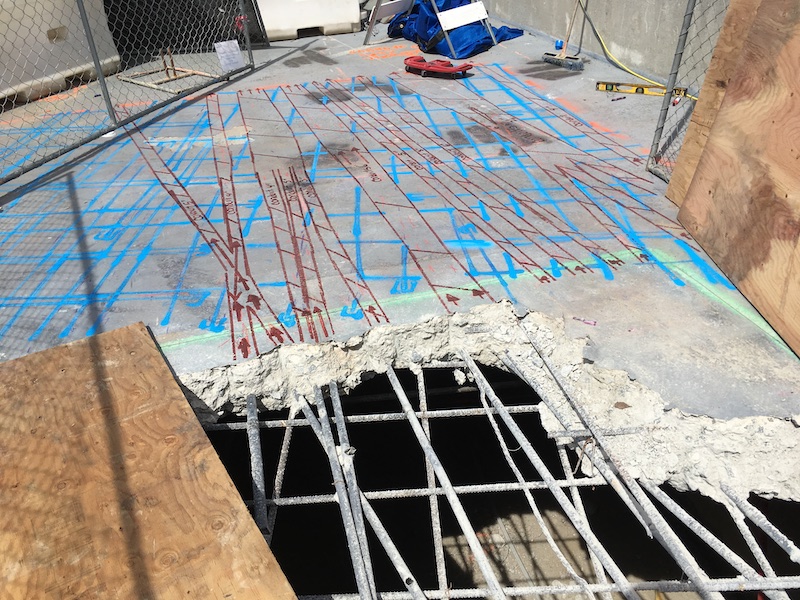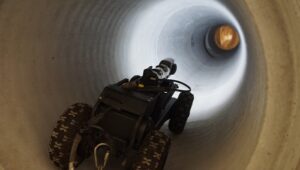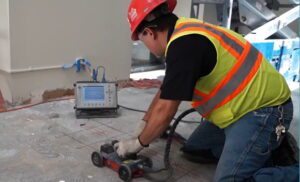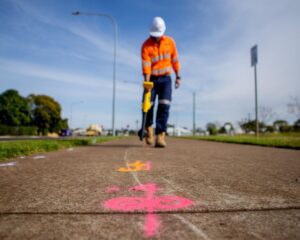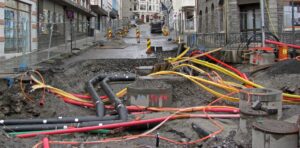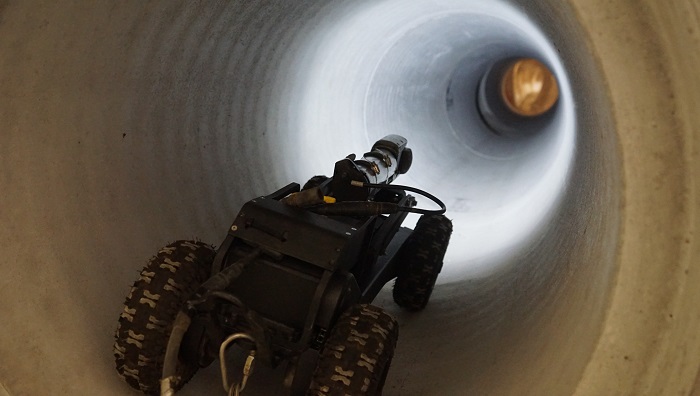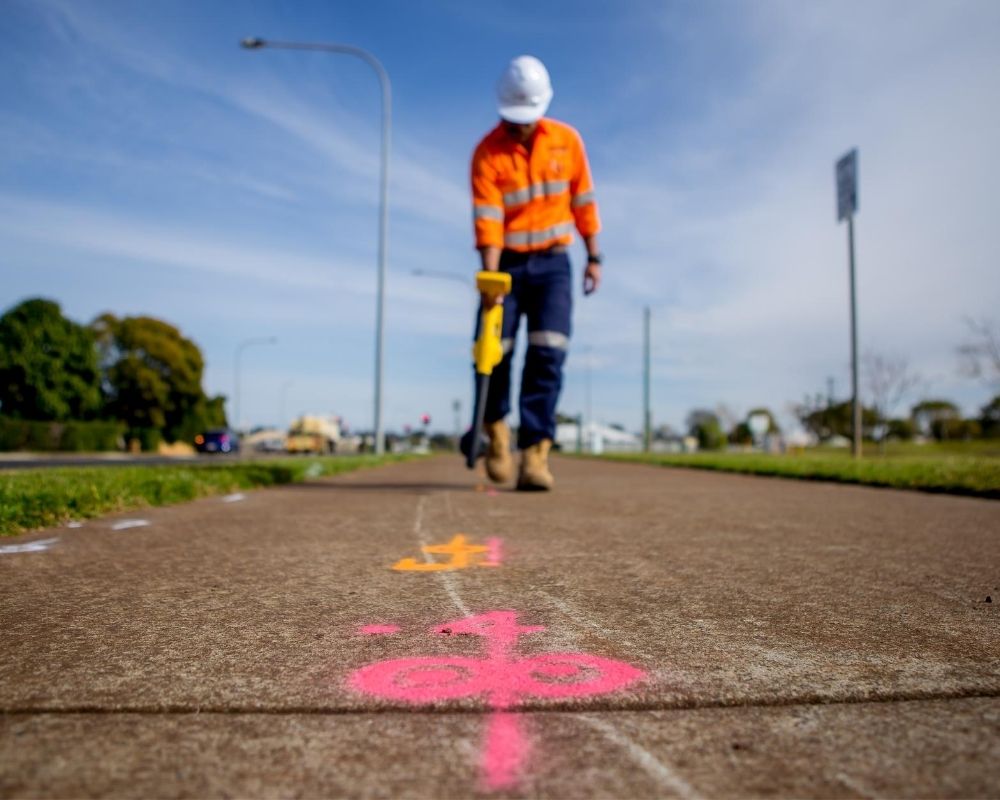Concrete scanning is a vital process used in construction and engineering industries to determine the presence of embedded objects or voids within concrete structures. It utilizes advanced technology and equipment to create accurate and detailed images of what lies beneath the surface of concrete. In this article, we will explore the concept of concrete scanning, its benefits, and its significance in various industries.
1. Introduction
In construction and engineering projects, it is crucial to have a clear understanding of the structural integrity and composition of concrete. Traditional methods of inspection and exploration, such as drilling or coring, can be time-consuming, invasive, and potentially damaging. This is where concrete scanning comes into play. By utilizing specialized equipment, concrete scanning enables professionals to visualize and analyze the internal features of concrete structures without causing any harm.
2. Understanding Concrete Scanning
Concrete scanning involves the use of ground-penetrating radar (GPR) technology, which emits electromagnetic waves into the concrete. These waves penetrate the material and bounce back when they encounter different objects or voids, creating a detailed image of the subsurface. The captured data is then analyzed and interpreted to identify the location, size, and composition of embedded objects, such as rebar, conduits, post-tension cables, or voids.
3. The Technology behind Concrete Scanning
Ground-penetrating radar (GPR) is the primary technology used in concrete scanning. It consists of a transmitting antenna that emits electromagnetic waves and a receiving antenna that captures the reflected signals. These signals are then processed and displayed on a computer screen, providing a clear picture of the subsurface. Advanced GPR systems can even generate 3D images, enhancing the accuracy and visualization of the results.
4. Benefits of Concrete Scanning
Concrete scanning offers several benefits, making it an indispensable tool in the construction and engineering industries. Here are some key advantages:
a. Accurate Detection of Embedded Objects
Concrete scanning enables precise detection of embedded objects, including rebar, conduits, and post-tension cables. This information is crucial for structural engineers, as it helps them design and plan modifications or repairs without compromising the integrity of the concrete.
b. Increased Safety and Risk Mitigation
By identifying potential hazards concealed within concrete structures, such as live electrical conduits or voids, concrete scanning helps prevent accidents during construction or renovation projects. It allows workers to avoid damaging critical infrastructure or causing harm to themselves or others.
c. Cost and Time Efficiency
Traditional inspection methods, such as coring or exploratory digging, can be time-consuming and costly. Concrete scanning eliminates the need for these invasive techniques, saving both time and money. By accurately identifying embedded objects beforehand, it streamlines the construction process and minimizes the risk of delays or rework.
d. Non-Destructive and Non-Intrusive
Unlike traditional methods that require drilling or coring, concrete scanning is non-destructive and non-intrusive. It does not cause any damage to the concrete structure, ensuring its integrity remains intact. This makes it an ideal choice for projects where preservation of the existing structure is paramount.
e. Environmental Considerations
Concrete scanning promotes environmental sustainability by reducing waste and minimizing the need for additional resources. By providing accurate information about the internal composition of concrete, it allows for targeted repairs or modifications, reducing unnecessary demolition and material consumption.
5. Applications of Concrete Scanning
Concrete scanning finds applications in various industries and sectors. Some notable applications include:
a. Construction and Engineering
Concrete scanning is extensively used in construction and engineering projects to assess the structural condition of existing concrete structures, locate utilities, and plan modifications or repairs. It ensures the safety, efficiency, and longevity of the built environment.
b. Infrastructure Management
Infrastructure management involves maintaining and monitoring critical infrastructure assets, such as bridges, tunnels, and highways. Concrete scanning helps in assessing the integrity of these structures, identifying potential issues, and planning maintenance activities.
c. Renovation and Retrofitting
During renovation or retrofitting projects, it is essential to understand the composition and condition of existing concrete structures. Concrete scanning aids in identifying potential obstacles, such as hidden utilities or deteriorated areas, allowing for informed decision-making and precise execution.
6. Safety and Risk Mitigation
Safety is of paramount importance in any construction or engineering project. Concrete scanning plays a vital role in ensuring safety by identifying potential risks, such as live electrical conduits, gas pipes, or post-tension cables. By detecting these hazards before commencing work, it minimizes the chances of accidents, injuries, or costly damages.
7. Cost and Time Efficiency
Concrete scanning offers significant cost and time savings compared to traditional inspection methods. By providing accurate information about the internal composition of concrete structures, it eliminates the need for exploratory digging or coring. This not only reduces labor and material costs but also speeds up the construction process, enabling projects to be completed within the allocated time frame.
8. Environmental Considerations
Environmental sustainability is an increasingly important aspect of construction and engineering. Concrete scanning contributes to sustainability efforts by minimizing waste and reducing the need for additional resources. It enables targeted repairs and modifications, reducing unnecessary demolition and material consumption, thus promoting a greener approach to construction.
Conclusion
Concrete scanning has revolutionized the way professionals assess and analyze concrete structures. Its non-destructive nature, accurate detection capabilities, and time-saving benefits make it an invaluable tool in the construction and engineering industries. By leveraging advanced ground-penetrating radar technology, concrete scanning enhances safety, improves project efficiency, and promotes environmental sustainability. Incorporating concrete scanning into construction projects ensures that the built environment is structurally sound, efficient, and safe for all.
Frequently Asked Questions
1. How does concrete scanning work?
Concrete scanning utilizes ground-penetrating radar (GPR) technology to emit electromagnetic waves into the concrete and create detailed images of embedded objects or voids beneath the surface.
2. Is concrete scanning a destructive process?
No, concrete scanning is non-destructive. It does not cause any damage to the concrete structure being scanned.
3. What can concrete scanning detect?
Concrete scanning can detect embedded objects such as rebar, conduits, post-tension cables, voids, or any other anomalies within the concrete.
4. How does concrete scanning benefit construction projects?
Concrete scanning improves safety, reduces costs, saves time, and aids in accurate planning and execution of construction projects.
5. Can concrete scanning be used in renovation projects?
Yes, concrete scanning is widely used in renovation projects to assess the condition of existing concrete structures and identify potential obstacles or hazards.
In conclusion, concrete scanning is a powerful technique that enables professionals to gain insights into the internal composition of concrete structures without causing any damage. Its benefits, including accurate detection of embedded objects, increased safety, cost and time efficiency, non-destructiveness, and environmental considerations, make it an indispensable tool in the construction and engineering industries. By incorporating concrete scanning into projects, professionals can ensure the structural integrity, safety, and sustainability of the built environment.

